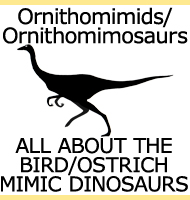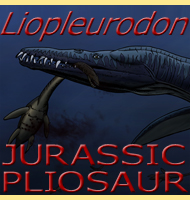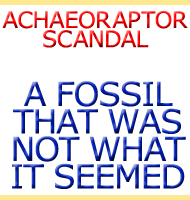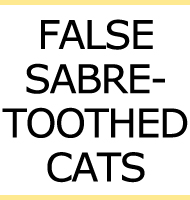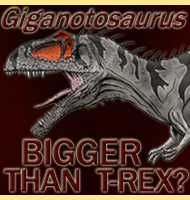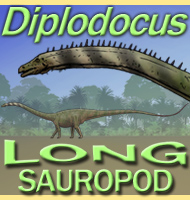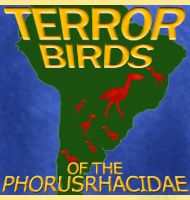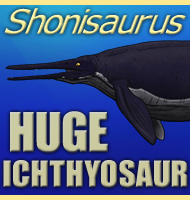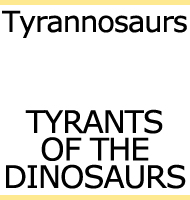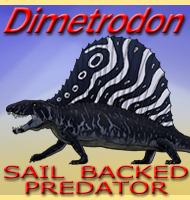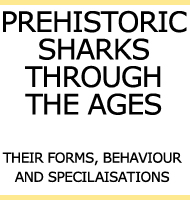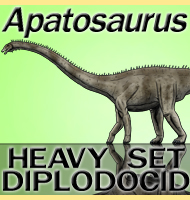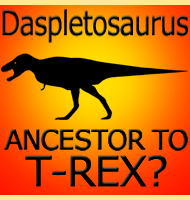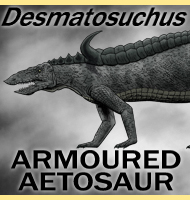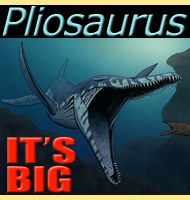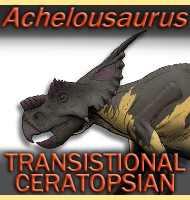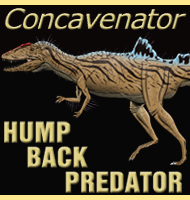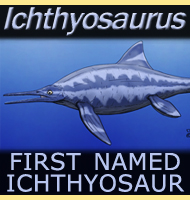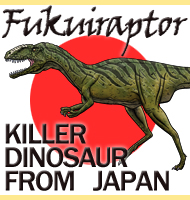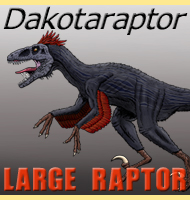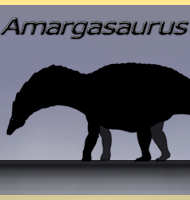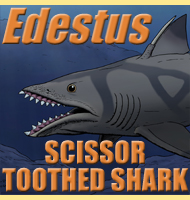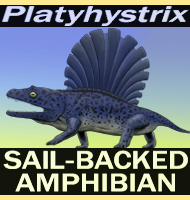


Spinosaurs
The Specialised Predatory Dinosaurs of the
Spinosauridae
Dinosaurs have been popular subjects of interest ever since the very first ones were discovered and reconstructed back in the nineteenth century, and out of all these it is usually the meat eating ones that get the most exposure. This has given rise to some genera such as Tyrannosaurus becoming household names, but in 2001 the release of a film called Jurassic Park 3 introduced a new favourite; Spinosaurus. Cinema goers were generally impressed by the on screen arrival of a new kind of theropod dinosaur that looked radically different to anything that had been portrayed before. These same cinema goers were stunned when this ‘new dinosaur’ actually killed a T-rex in a very brief fight in the early stages of the film, something that had people buzzing about a dinosaur that was not only bigger than Tyrannosaurus, but capable of killing one too. This film is of course science fiction, a fight such as this between these two genera could never happen since Spinosaurus appeared and went extinct again many tens of millions of years before Tyrannosaurus appeared. It did however cement a new type of dinosaur in the public consciousness, though many people still do not realise that Spinosaurus is but one genus of a whole group of dinosaurs that are today referred to as the spinosaurids.
Exactly what is a spinosaurid?
To
briefly reference Jurassic Park 3 again, some
movie goers
criticised the film makers for featuring what they thought was a
‘made up’ dinosaur. With its large size, a very long
crocodile-like mouth and huge fan shaped sail on its back, the
Spinosaurus in the film was reminiscent of the so
called
‘slurpasaurs’ from low budget monster flicks in the early second
half of the twentieth century. For those not familiar with this
term, a slurpasaur is basically where film makers take a regular
lizard or baby crocodile, attach extra fins and spines to it and then
make it move around in front of a camera on a scale set; hey presto,
instant ‘dinosaur’. The rumours of a made up dinosaur were
quickly quashed however, when features about the scientific history
of Spinosaurus began to appear, particularly
detailing how the
dinosaur was reconstructed.
Spinosaurus
was first described as a dinosaur in 1915, from very incomplete
skeletal remains that had been discovered in Egypt in 1912. Already
the presence of elongated neural spines (the upper projection of a
vertebra) was documented, but the genus was largely unknown to the
public until it began to be included in popular science books about
dinosaurs later in the twentieth century. During these early public
appearances the skull of Spinosaurus was unknown,
and a more
‘standard’ theropod skull was added for the reconstruction,
resulting in reconstructions where Spinosaurus was
simply like any
other theropod dinosaur, but one with a huge sail on its back.
The
true nature of Spinosaurus, and by extension
future spinosaurids,
began to be pieced together in 1986 with the description of the
genus Baryonyx.
This genus does not display elongated neural spines,
but since it is believed to be a juvenile it may have had them later
in life, but it does have its skull. The snout of this skull is
proportionately much longer than the snouts of other theropod genera,
to the point where you could call it crocodile-like. In 1998
another new genus called Suchomimus
was created, and again the long
crocodile like snout was present. That same year a new specimen of
Spinosaurus was also described and although only a
partial snout
(MNHN SAM 124) this revealed that the long missing skull of
Spinosaurus actually would have looked a lot like
the skulls of
Baryonyx and Suchomimus.
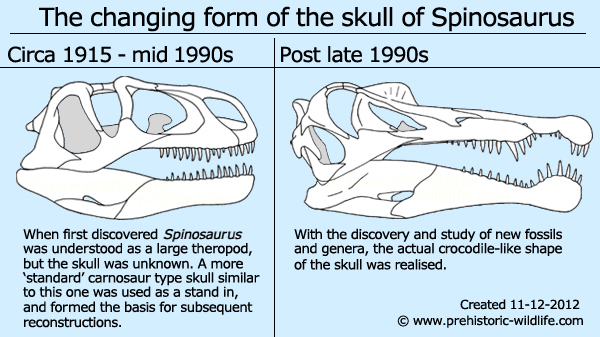
The
conclusion was a simple one, all three of these genera were somehow
related to one another, and that together they represented a
previously unknown group of dinosaurs. Although Baryonyx
was the
first to have its skull studied, Spinosaurus was
named first, and
under standard procedures governing the naming of animals,
Spinosaurus had priority over the naming of this
group of dinosaurs
which became known as the Spinosauridae, with member genera of this
group being known as spinosaurids. The Spinosauridae had actually
been established as a family group back in 1915 by the German
palaeontologist Ernst Stromer as a home for the genus Spinosaurus
which
he also named in 1915, but again the full nature of these dinosaurs
was not appreciated until the closing years of the twentieth century.
In addition to these three, another genus named irritator that was
named in 1996 from skull material was also included into the group.
The
history of the spinosaurids may actually go all the way back to 1841
when the British palaeontologist Richard Owen named Suchosaurus
based
upon a description of isolated teeth. Again, because the oldest
named genus usually comes first, it could be said that the
Spinosauridae should be named the Suchosauridae. But here a special
case is made because since Suchosaurus is only
named from isolated
teeth, it is near impossible to attribute skeletal remains to this
genus. This is both why this genus is considered dubious, and also
why the Spinosauridae will stay named the Spinosauridae, because
Spinosaurus at least has some skeletal material with
which further
remains can be identified by. However a well-known exception to the
above involves the genus Troodon,
a small predatory theropod that was
described from teeth long before skeletal remains were added to the
genus.
Fossils
of this group have been found in frustratingly incomplete states,
with usually no more than teeth and bone fragments to go on, but we
do know a few identifying features of the group. One is that most
spinosaurids had teeth similar to one another which were long and thin
so that they were conical in form, not great for cutting, but
perfect for spearing and holding. Spinosaurid genera where the skull
or parts of is known all reconstruct to the same elongated
crocodile-like snout. The tips of these snouts also seem to have had
pressure sensitive receptors. Some such as Spinosaurus,
Suchomimus
and later Ichthyovenator
are known to have had enlarged neural spines
for growths on their backs. Other genera do not have these parts
preserved, or in the case of Baryonyx, may have been too young to
have them. Finally where the hands of spinosaurids are
preserved they display enlarged claws on the ends of the fingers.
How are spinosaurids related to
other dinosaurs?
How
spinosaurids evolved is still a mystery at the time of writing, but
they must have evolved from other more standard theropod dinosaurs that
appeared earlier in the Mesozoic. Usually the Spinosauridae is placed
below the Megalosauroidea, a group which contains some of the
earliest large theropod predators of the Mesozoic, with origins in
the Jurassic. Spinosaurids may be related to members of the
Megalosauroidea sometimes classed under the Megaraptora such as
Megaraptor
and Fukuiraptor.
These more ‘standard’ theropods seem
to have enlarged claws on their fingers, though this could be a case
of convergent evolution with the same feature simply repeating it
itself in two distantly related family groups.
A
more general classification for spinosaurids is that they are tetanuran
theropods. This means that they were bipedal dinosaurs that walked
around on two highly developed rear legs, while having two smaller
but still quite functional fore arms. The body would have been
supported so that the spine was horizontally level to the ground while
the tail was carried high off the ground and kept fairly stiff
(tetanuran theropods are often just described as ‘stiff-tailed’
theropods). Because of this spinosaurids would have been at least
distantly related to other tetanuran theropods, which would actually
be most of the other known theropod genera of the Jurassic and
Cretaceous periods. At the time of writing the lack of really good
skeletal (and transitional) remains across several genera make it
hard to definitively establish a closer family association with other
theropod groups.
After
the theropods, the spinosaurids would of course have been related to
other types of dinosaur since they are after all identified as
dinosaurs, and the dinosaurs would in turn be related to other
reptiles, and then even after this chordates (back boned animals).
Geographical and temporal
distribution.
In
the early days of the Spinosauridae, spinosaurids were identified as
mostly from North Africa (Spinosaurus and Suchomimus),
Europe
(Baryonyx) and South America (Irritator).
Newer genera have
now been named as coming from North Africa and South America, but now
new genera have been named from Asia, with the best represented genus
from here so far being Ichthyovenator.
Spinosaurid remains have also
been considered to have been found in Australia, where a single
cervical (neck) vertebra has been described (Barrett et al,
2011).
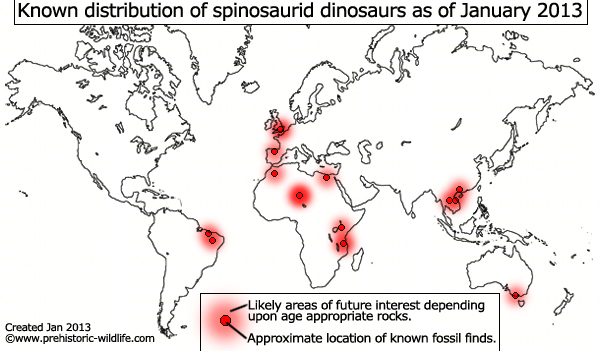
Before
drawing conclusions about the exact distribution of spinosaurids, it
needs to be firmly established that before you go looking for certain
examples of prehistoric animals, you need to identify age appropriate
rock formations for those kinds of animals. For example, so far the
dinosaurs disappear from the fossil record at the end of the Cretaceous
about sixty-five million years ago, so it would be foolish to look
for dinosaurs by digging into a rock formation that was laid down
five million years later during the Pliocene. Spinosaurids for
their part are mostly known from early Cretaceous deposits,
especially from the Hauterivian to Albian stages. Looking in parts
of the world which have rocks that go back to this age, which to no
surprise to geologists cover large areas of South America, North
Africa and Asia, would be to make an informed start when looking for
remains of spinosaurids.
However
in 2012 a new genus of spinosaurid named Ostafrikasaurus
has raised
the notion that spinosaurids may have started appearing as far back as
the late Jurassic (mid Tithonian). Ostafrikasaurus
is based upon
the description of teeth that appear spinosaurid, but are also
similar to other theropod forms, such as the higher number of
denticles on the teeth. Unfortunately the lack of skeletal remains
make any further association with spinosaurids speculative, but it
still needs to be remembered that the spinosaurids had to start
somewhere. Also given their somewhat radical appearance to other
theropod forms, they would have needed some time to develop their
features, and the late Jurassic is as good as place as any to start
looking for earlier spinosaurids.
To
summarise this segment, spinosaurids seem to appear in the late
Jurassic, and proliferate in the Early Cretaceous. To date only
Spinosaurus and Oxalaia
are thought to have made it into the late
Cretaceous, specifically the Cenomanian, which is the first stage
of the late Cretaceous. Caution must be established however before
assuming that this was the end for the spinosaurids. An isolated
tooth from Henan province in China has been speculated to possibly be
from a spinosaurid dinosaur, and is significant because it was
recovered from a Santonian age deposit, beyond halfway into the late
Cretaceous (Hone, Xu & Wang - 2010). Just because
other remains are lacking, it does not mean that no spinosaurids
survived into the late Cretaceous, just that we don’t have the
fossil evidence to prove that. Likewise, just because spinosaurids
are currently mostly known from North Africa, South America,
south-east Asia and Western Europe, it does not mean that they never
lived anywhere else, just that there is no evidence for that either.
The range of a particular type of animal is usually dictated by the
amount of suitable habitat combined with an animals ability to reach
it, but prehistoric animals also need to fossilise to leave evidence
for us to find, and this only happens rarely.
How did spinosaurids live?
As
recently as the late twentieth/early twenty-first century,
spinosaurids had been popularly envisioned as terrifying predators
that would rip small plant eating dinosaurs to pieces. However this
concept is more born out of early reconstructions of Spinosaurus
way
back when it was still thought to have had a more typical theropod
skull. To get a more complete picture of how spinosaurids lived,
you need to look at a number of elements and from there piece them
together into a coherent form.
Spinosaurids
like most theropods had mouths that were full of sharp teeth, hinting
at a predatory existence. The study of predators usually starts with
the teeth because teeth are formed to work in certain ways. Most
large Jurassic and early Cretaceous theropods had laterally compressed
(flattened from the sides) teeth that were blade like with serrated
edges, the perfect tools for slicing the flesh of large animals.
Spinosaurids however have teeth that are unserrated, long, and
relatively thin but round and end in a point, more like a nail than a
blade. These teeth can’t slice flesh, but they are great for
puncturing into flesh because the small point focuses pressure. These
teeth are usually seen on animals that are fish eaters
(piscivores), such as elasmosaurid plesiosaurs,
ornithocheirid
pterosaurs,
fish eating crocodiles,
to even fish that prey on other
fish.
The
principal for how these teeth work is really very simple. If you hold
a fish in your hands it will squirm and thrash about as it tries to
wriggle out to escape back into the water and would do the same if it
was caught in the mouth of a predator. A predator with serrated blade
like teeth could catch a fish in its mouth, but the fish could cuts
itself free as it thrashed about because the teeth can’t effectively
hold flesh, only cut it. The fish will likely be injured and it
could still die from its wounds, but what’s important here is the
predator still goes hungry. Long thin teeth like those of
spinosaurids act like pins, they can punch through the scales and dig
into the flesh, and because the fish can’t thrash against the teeth
to free itself, it ends up getting speared and held in place. The
predator can then carry the fish away from the water and on to land
where if it is still alive and thrashing about, the fish still has no
chance of escaping into the water, meaning a predator that does not
go hungry.
The
next part of the anatomy that hints at how predators ate are the large
claws of the hands which are attached to well-developed fore-arms.
Claws can and often are killing weapons in their own right, but on
spinosaurids they can just be as easily explained as a reaction to
the teeth. Teeth that are long, thin and unserrated are incapable
of slicing flesh into bite sized chunks, and if they were used to
tear off flesh, the individual in question may experience a greater
than usual amount of tooth loss through excessive wear. In the long
term this is not a problem since all dinosaurs (or at least those
that had teeth) are known to have constantly replaced their teeth
throughout their lives. Short term however such tooth loss could be
detrimental to that individual’s ability to catch prey, meaning
greater occurrences of unsuccessful hunting, and a higher likelihood
of starving, or related conditions from said starvation. Having
very large claws that would have been sharpened by a covering of
keratin in life means however that spinosaurids were perfectly capable
of rending flesh without putting too much stress on their teeth.
One
of the most specialised features seen in spinosaurids, which is
particularly associated with the fossil remains of Spinosaurus
in a
2009 study (MSNM V4047) is the snout. In depth study of the
snout has revealed the presence of tiny pores in the bone which all
link up to a space within the snout. Current thinking is that this
was the housing for a pressure sensitive organ in the snout that was so
sensitive it could detect changes in water pressure when submerged
below the surface. This is an incredibly advanced way of detecting
submerged prey but one that works by a very simple principal. Water
at a specific depth is at a constant pressure level; the only
background differential is that the deeper you go down the weight of
the water above presses down upon the water where you are, compacting
it into a smaller space, increasing its pressure in the process.
Now as a fish swims through the water its tail (and to an extent the
body) is pressing against the water as it flaps from side to side,
and its head presses against the water in front as it swims forward.
The pressing of the water from this motion causes subtle changes in
the water pressure which essentially act as waves that pass through the
surrounding body of water. This is the same principle to how you see
ripples on a water surface when you drop something into a body of
water. A spinosaurid, equipped with a pressure sensitive organ that
was linked to multiple receptors on the snout would be able to detect
these pressure waves and with practice not only would it be able to
detect where the fish was, but how fast it was going and in what
direction. From this point all a spinosaurid would have to do is
gauge where the fish was going to, and then snap its jaws shut on
that spot just as the fish was passing through. As long a spinosaurid
stayed perfectly still until it struck, the fish would probably
never know what was coming until it was already caught it the jaws.
Even
more evidence for spinosaurids being fish hunters comes from even more
scientific analysis of fossil deposits and the fossils themselves.
Spinosaurid fossils are mostly associated with what are called fluvial
deposits. Basically these deposits are built up by the deposit of
sediment from river systems, which means that spinosaurids were
living in association to such geographic features such as rivers,
deltas and floodplains. Oxygen isotope analysis of spinosaurid
teeth (Amiot et al, 2010) has also confirmed that spinosaurids
were living in wetland environments such as river systems.
Studies
of spinosaurid skulls and just as importantly their neck mechanics,
has also indicated that spinosaurids were best adapted for quick up
and down motions of the head. This is exactly the type of motion that
a sit and wait predator uses when striking into the water to snatch
prey below the surface. Spinosaurids however do not seem to have been
capable of strong side to side movements like other theropods, though
this was unlikely to have been a hindrance given their supposed
preferred mode of hunting.
However,
it should be remembered that a specialised predator of a type of
creature is not necessarily an obligate predator of said animals.
There are at least two occasions which counter the idea that
spinosaurids only ate fish. These are the discovery of juvenile bones
of the dinosaur Iguanodon
that were found in association with the
spinosaurid Baryonyx in a fashion that suggests
they were consumed by
the individual, and there is a vertebra of a pterosaur
which has a
spinosaurid tooth embedded into it. Both of these cases indicate that
spinosaurids would eat other types of animal other than fish, giving
rise to the suggestion that spinosaurids were generalists.
It
is also quite possible however that both of these instances may have
been cases of opportunistic scavenging. Spinosaurids would not have
been the only predators in their environments and would likely come
across the carcasses left behind by these other predators after that
had eaten their fills. After all an animal, any animal, can only
eat so much to fill its stomach, and would have to stop eating after
it had achieved this. All predators are known to scavenge the remains
of other animals because it is a free meal that does not require the
energy expenditure in the form of calories to acquire. When faced
with the prospect of getting a few mouthfuls from a left over carcass,
or standing on the side of a river and waiting for a fish to swim by,
a spinosaurid will probably take the easy option.
It
should also be pointed out at this point that as well as bones of
Iguanodon, fish scales were also found with the
same specimen of
Baryonyx, something that confirms that fish were
an important part of
a spinosaurid diet.
Did all spinosaurids have sails
humps?
The
problem with answering this question is that out of all the current
spinosaurid genera, named by 2012 only four have vertebrae
described for them. From these Spinosaurus, Suchomimus
and
Ichthyovenator are all known to have had growths
along their backs.
The size and robust build of these spines however have led to popular
thinking that they supported a form of fatty hump rather than a thin
sail of skin. Baryonyx for its part does not have
elongated neural
spines, but it has also been speculated to have been an immature
animal at the time of its death. This has not only led to further
speculation that Baryonyx may have developed a
hump in later life,
but that Suchomimus may actually be the adult
form, meaning that it
may in fact be a synonym of Baryonyx.
It
should be said at this point that the spinosaurids were not the only
dinosaurs to have had enlarged neural spines to support a growth on the
back. The predatory carcharodontosaur
theropods Acrocanthosaurus
and Concavenator
both
had enlarged neural spines, and even the ornithopod Ouranosaurus,
an ornithischian dinosaur even more distantly related than the other
two previous genera also had a well-developed hump growth on its back.
What were the sails/humps used
for?
This
is the question that has caused even more debate than ideas about how
spinosaurids actually lived, but to keep things short we’ll run
through this in sequence. The neural spines of spinosaurids were much
stronger than they needed to be to support a sail made up of mostly
skin. Comparison to other animals that have similar developments
leads most palaeontologists to agree that neural spines were probably
the support for a hump. Out of three current genera where the humps
can be reconstructed, they are all found to have been a specific
shape for each genus.
One
of the early ideas is that the humps were there for thermoregulation
(body temperature control). Assuming a spinosaurid had to enter
the water to reach the deeper depths where the fish were, it may have
experienced heat loss through body surfaces exposed to the cooling
water. A hump along the back could be angled to catch more of the
sun’s rays, warming blood that was in the hump, which could then be
pumped to the cooler areas of the body that had been chilled by the
water. This scenario is plausible, but it fails to explain why the
humps took different forms in each genus.
An
alternative theory is that the hump was there for fat storage. This
is a very interesting theory that can tie in to the actual hunting
lifestyle of the dinosaur. Certain species of fish will live in
rivers all year round, and some of the largest rivers in the world
today such as the Amazon river contain fish that are so huge it is hard
to appreciate just how big they are until you actually seen one.
But, if rivers saw the arrival of fish from the sea that were headed
upstream for spawning, just like salmon do today, then the survival
of spinosaurids might have depending in part upon these times of bounty
when the river was suddenly but briefly filled with higher than usual
numbers of fish. These numbers of fish may have been beyond that need
for a spinosaurid to live for that day, but by gorging itself during
this period a spinosaurid could put on a lot of weight as fat, and by
having a special feature to store fat, a spinosaurid could store a
greater amount of fat. Then when times were lean, a spinosaurid
could rely upon its fat reserve to see it through to the next occasion
when the rivers were full of migratory fish again. This would also
work in situations where rivers would flood and fill with fish in the
wet season, but be reduced to little more than an empty trickle in
the dry season meaning that spinosaurids could not feed upon their
preferred food. While this does allow for occasional feeding upon
other types of animals such as dinosaurs and pterosaurs, it still
does not explain why humps varied in form across genera.
The
one theory that comfortably explains the difference is display. By
having species specific humps and looking different to one another,
Spinosaurus could not confuse an Ichthyovenator
for a member of its
own species (this is not to infer the two lived together, just to
make an example). In life the humps may have had a different
colouration to the rest of the body, or even became more vivid when
an individual spinosaurid wanted to attract a mate.
It
is quite possibly that there may also be more than just one reason why
spinosaurids had humps and ridges down their backs. For example,
the theory of display also connects well with the theory of fat
storage. A particularly well fed spinosaurid would have a much fatter
hump/ridge than a spinosaurid that had not been feeding well. This
would allow the spinosaurid with the fatter hump to signal to potential
mates that it had the skills and health to be more successful than its
thinner humped counterpart, and was therefore more worthy of passing
its genes down to the next generation.
What can be expected for
spinosaurids in the future?
The
golden age of the study of spinosaurids began in the final two decades
of the twentieth century, and especially in the 1990s, with the
naming of new genera and the discovery of new fossils for existing
genera taking place for the first time since the naming of Spinosaurus
in 1915. In the first decade of the twenty-first century, even
more new fossils and genera were found, allowing for enough fossils
to be widely studied to begin to figure out the inner workings of
spinosaurids. Now that palaeontologists have a much larger history of
study to base their own theories on, the search for new spinosaurids
can be focused upon areas where discoveries of these dinosaurs are more
likely to happen. The increase in paleontological study in areas of
the world such as Asia will likely yield more new discoveries just like
they have already begun to.
Future
problems however may come from the creation of dubious genera on the
basis of remains that are geographically and temporally isolated from
existing finds. A recent tooth taxon called Ostafrikasaurus
has shed
insight into the possible evolution of spinosaurids, but unless
further teeth actually attached to a skull are found, it will be near
impossible to attribute further remains to this genus. The
fragmentary nature of most spinosaurid fossils is also problematic,
such as with the South American genus Oxalaia,
which at the time of
writing only has a tip of a snout attributed to the genus. In fact
out of all the new fossils and genera named since Suchomimus
in
1998, the only genus to reveal a radically new and never before seen
feature was Ichthyovenator in 2012, with its
distinctive notch.
It
is hard to predict further finds of fossils because not only does a
fossil have to be found, but it needs to have fossilised in the first
place. It also needs to be remembered that the larger the animal,
the less likely it is that a complete specimen will be found, simply
because bones only fossilise after they have been buried and protected
from the elements, scavengers, bacteria, etc., and this would
obviously take longer with a large animal rather than a small one.
But with that said, spinosaurids do seem to have lived in wetland
ecosystems near rivers and on floodplains, and there is a higher
chance with this happening in these ecosystems because rivers can
flood, burying the surrounding area as well as remains of any dead
animals under a layer of sediment. Another troublesome factor to
consider is that the climate of some rock formations, particularly
those in places like North Africa, is very harsh, and fossils that
become exposed to the elements can be quickly damaged by such processes
as wind erosion.
The
prospect of future fossil discoveries of spinosaurids is as much a
certainty as any other kind of dinosaur, but in all likelihood
fossils are likely to be fragmentary and incomplete. This does not
mean that an almost complete spinosaurid will never be found, but
this is never likely for any kind of animal, and complete individuals
of any large vertebrate are rarely found. It’s possible that we may
see a greater abundance of spinosaurid remains in late Cretaceous era
rocks since this trend does seem to be happening right now. Primitive
forms might be discovered in late Jurassic deposits also. Out of all
the known spinosaurid fossils, teeth will probably continue to be the
most numerous, in part due to the fact that dinosaurs would shed
teeth that were worn and/or damaged so that a new one could grow to
replace it.
Geographically,
Asia, North Africa, South America and Western Europe are likely to
yield more remains, but we may see discoveries being made further
afield. Expeditions in other parts of Africa may yield further
remains, and discoveries in Thailand and Laos hint at a broad
distribution of Asian spinosaurids. The fossil formations of China in
particularly may hold untold numbers of spinosaurids yet to be
discovered. Australia is also an interesting proposition since many
of the rock Formations there are age appropriate for early Cretaceous
spinosaurids, as well as the presence of a shallow sea (Eromanga
sea) over much of modern inland Australia would allow for the
presence of a large number of river deltas that could have been home to
spinosaurids.
The
only continents left out so far are Antarctica and North America.
Antarctica was much closer to Australia during the Mesozoic, and
many dinosaur genera are known to have lived there. If spinosaurids
were able to colonise what is now Australia, Antarctica would not be
too far away for them to colonise, especially if they found suitable
habitat there. Again however, without fossils to prove this, no
one can say for certain. A further thing to consider is that while
Antarctica was not covered by a sheet of ice in the Cretaceous, it
would have had a greater seasonal change in temperature, and if
spinosaurids ventured this far, they may have had to have been
seasonal visitors that migrated back towards the equator when it got
cooler.
North
America however is a little uncertain for a number of reasons. One
and most obvious is the fact that the fossil bearing rock formations of
North America, particularly those of Canada and the United States
have been studied for longer and more extensively than most others in
the world, and so far no spinosaurid remains have been found.
Additionally North America was effectively split during the middle for
much of the Cretaceous by the Western Interior Seaway, something that
hampered faunal interchange.
So
far though there would have been three ways for spinosaurids to
possibly reach North America, the first in the late Jurassic to Early
Cretaceous. All of the continents used to be much closer together
than they were today and there seems to have been a connection between
North America and Western Europe, specifically Portugal as recently
as the Early Cretaceous. The best evidence for this comes from many
dinosaurs discovered in Portugal, including a specimen of
Stegosaurus, being almost identical to some of the dinosaurs living
in North America during the late Jurassic. Western European genera
like Baryonyx are known from the earliest stages of
the Cretaceous,
and these just might have had enough time to cross over into North
America. Baryonyx is of particular interest since
although it was
first discovered in England, fossils for this genus are also known
from Spain which is on the Eastern border of Portugal.
The
other two ways rely upon spinosaurids surviving into the late
Cretaceous. Like with Europe and North America, Africa and South
America are believed to have still been joined well into the Cretaceous
period, something that explains the presence of spinosaurids on both
continents, as well as some other kinds of dinosaurs. During the
late Cretaceous it is now believed that South America and North America
were at one point if only briefly connected. Evidence for this comes
from the seemingly sudden presence of saurolophine hadrosaurids
like
the genus Willinakaqe,
a type of dinosaur usually seen in North
America and Asia, and previously thought to have not possibly
been able to reach South America because of a long severed connection
with Africa. Again, if spinosaurids were still around in South
America by the latest stages of the Cretaceous, it is remotely
possible that they may have been able to cross over too.
The
final path of approach for late Cretaceous spinosaurids would be
through Asia and across the Bering land bridge into upper North
America. This seems to have been the route taken by many other types
of dinosaurs, and one that was stable and open throughout the
Mesozoic. If spinosaurids were indeed living in China during the
Santonian stage of the late Cretaceous, it is an outside possibility
that they may have had the opportunity to cross over.
As
it keeps being said, all of the above depends upon future fossil
discoveries to prove them, and if these are not made then it would be
just as easy to say that spinosaurids did not live in these areas.
But for the above reasons stated, future discoveries in South
America (especially Brazil), Africa, Western Europe, South
East Asia and all of the areas that connect them are possible as long
as there are late Jurassic to Cretaceous (especially early)
sedimentary rocks to study. Australia and parts of Asia that are
further north and east from existing south east Asian finds are
possibilities. Antarctica and North America are not impossibilities,
but the chances of finding spinosaurids on these continents are far
more remote.
|
Angaturama
(widely regarded as a
synonym to Irritator) |
Further reading
- A neurovascular cavity within the snout of the predatory dinosaur
Spinosaurus, C. Del Sasso, S. Maganuco,
A. Cioffi -
2009.
- Oxygen isotope evidence for semi-aquatic habits among spinosaurid
theropods, R. Amiot, E. Buffetaut, C. Lecuyer, X.
Wang, L, Boudad, Z. Ding, F. Fourel, S. Hutt, F.
Martineau, A. Medeiros, J. Mo, L. Simon, V.
Suteethorn, C. Sweetman, H. Tong, F. Zhang & Z.
Zhou - 2010.
- New data on spinosaurid dinosaurs from the Early Cretaceous of the
Sahara, P. Taquet & D. A. Russel - 1998.
- A new specimen of Spinosaurus (Dinosauria,
Theropoda) from
the Lower Cretaceous of Tunisia, with remarks on the evolutionary
history of the Spinosauridae, E. Buffetaut & M. Ouaja
- 2002.
- Fine sculptures on a tooth of Spinosaurus
(Dinosauria,
Theropoda) from Morocco, Y. Hasegawa, G. Tanaka, Y.
Takakuwa & S. Koike - 2010.
- Pterosaurs as part of a spinosaur diet, E. Buffetaut, D.
Martill & F. Escuillie - 2004.
- Neural spine elongation in dinosaurs: sailbacks or
buffalo-backs?, J. B. Bailey - 1997.
- New information on the skull of the enigmatic theropod
Spinosaurus, with remarks on its sizes and
affinities, C. Del
Sasso, S. Maganuco, E. Buffetaut & M. A. Mendez
- 2005.
- A new crested maniraptoran dinosaur from the Santana Formation
(Lower Cretaceous) of Brazil, D. M. Martill, A. R. I.
Cruickshank, E. Frey, P. G. Small & M. Clarke
- 1996.
- Irritator challengeri, a Spinosaurid (Dinosauria: Theropoda)
from the Lower Cretaceous of Brazil, H. D. Sues, E. Frey,
D.M. Martill & D. M Scott - 2002.
- New remains of the enigmatic dinosaur Spinosaurus
from the
Cretaceous of Morocco and the affinities between Spinosaurus
and
Baryonyx, E. Buffetaut - 1989.
- New information regarding the holotype of Spinosaurus
aegyptiacus
Stromer, 1915, J. B. Smith, M. C. Lamanna, H. Mayr
& K. J. Lacovara - 2006.
- Baryonyx walkeri, a fish-eating dinosaur from
the Wealden of
Surrey, A. J. Charig & A. C. Milner - 1997.
- The spinosaurid dinosaur Baryonyx
(Saurischia, Theropoda) in
the Early Cretaceous of Portugal, E. Buffetaut - 2007.
- Unusual theropod dinosaur teeth from the Upper Jurassic of Phu
Wiang, northeastern Thailand, E. Buffetaut & R.
Ingevat - 1986.
- An early spinosaurid dinosaur from the Late Jurassic of Tendaguru
(Tanzania) and the evolution of the spinosaurid dentition, E.
Buffetaut - 2012.
- Spinosaurid teeth from the Late Jurassic of Tendaguru, Tanzania,
with remarks on the evolutionary and biogeographical history of the
Spinosauridae, E. Buffetaut - 2008.
- The first definitive Asian spinosaurid (Dinosauria: Theropoda)
from the early cretaceous of Laos, R. Allain, T. Xaisanavong,
P. Richir & B. Khentavong - 2012.
- A long-snouted predatory dinosaur from Africa and the evolution of
spinosaurids, P. C. Sereno, A. L. Beck, D. B.
Dutheil, B. Gado, H. C. E. Larsson, G. H. Lyon,
J. D. Marcot, O. W. M. Rauhut, R. W. Sadleir, C.
A. Sidor, D. D. Varrichio, G. P. Wilson & J.
A. Wilson - 1998.
- A new dinosaur (Theropoda, Spinosauridae) from the
Cretaceous (Cenomanian) Alcantara Formation, Cajual Island,
Brazil, Alexander W. A. Kellner, Sergio A.K. Azevedeo,
Elaine B. Machado, Luciana B. Carvalho & Deise D.R.
Henriques - 2011.
- A probable baryonychine (Theropoda: Spinosauridae) tooth from
the Upper Cretaceous of Henan Province, China, Hone, Xu
& Wang - 2010.
- First spinosaurid dinosaur from Australia and the cosmopolitanism
of Cretaceous dinosaur faunas, P. M. Barrett, R. B. J.
Benson, T. H. Rich & P. Vickers-Rich - 2011.
----------------------------------------------------------------------------
Random favourites
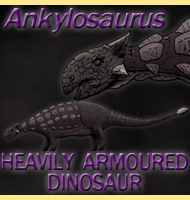 |
 |
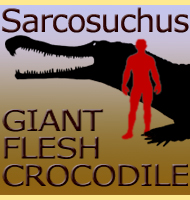 |
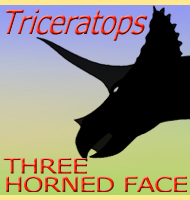 |
